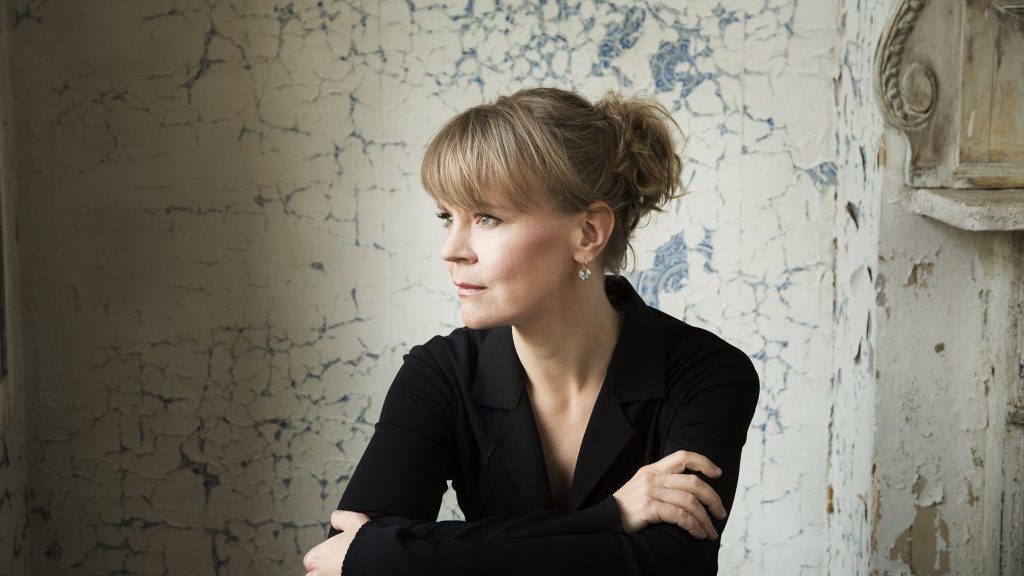
THE RIGHT ‘RITE’ WITH THE RIGHT MAESTRA
To hear the right Rite with the right conductor (Susanna Mälkki) would’ve been the right move over the weekend. Music that was despised a century ago is now embraced.
One of the world’s foremost women conductors currently, doing arguably the most revolutionary work of all time: a formidable combination. So it wasn’t the original ballet this time, merely the sound of the huge orchestra, which may be ultimately superior. Or are we all anxious to watch in detail the Sacrifice of the Chosen One, who, to make it worse, is a female? Not too sure about that one.
The maverick composer Igor Stravinsky threw down the gauntlet to the traditionalists who doted on Auber, Delibes and Glazounov. His “Rite of Spring” score of 1913 is seen as the downbeat launching modern music around the world, making a tsunami-like break with the far tamer musical traditions of yore. Not surprisingly, its world premiere at the ballet in Paris caused the most famous riot in the history of classical music, with incensed patrons going at each other with umbrellas, and whistling in derogatory fashion to beat the band, all beginning soon after the opening high bassoon solo.
For the dressy Parisian balletomanes, the sight of primitive tribes and gory rituals was simply too much. For today in concert, it’s a powerful programmatic work of savagery, sonic color and astute musical complexity. Clashing dissonances? They’re nothing compared to the constant changes of meter, forcing the conductor and players to count at record speed in dizzying fashion. Also the sheer sound volume is formidable.
The Davies Hall stage bursts at the seams with the enlarged orchestra (eight horns, two tubas, 5 trumpets, two timpanists!). The willowy Mälkki is a whiz at these complexities, with ultra-clear gestures and great command of dizzying meter. I liked her innovation: After mounting the podium, she had some 20 seconds of total silence, as if to clear our ears for the sonic supernovae to come. For the vigorous ovations—what a change, in 104 years!—she had sections stand to receive ovations, plus a solo bow for Steven Paulson, who played the opening stratospheric bassoon solo.
The audience was equally entranced by Garrick Ohlsson as soloist for the Beethoven Piano Concerto No. 1, a giant bringing a dulcet touch to the keyboard, and getting away with playing a 6-minute cadenza (solo), perhaps the longest in any concerto in repertory. He added a Chopin Nocturne in F Sharp Major—in six sharps, no less.
The concert had opened with Stravinsky’s rarely heard “Scherzo fantastique,” Op. 3, already showing his genius at colorful orchestration, with three (!) harps. The 13-minute piece is whimsical and playful, and assuredly more complex than the better known “Scherzo a la Russe” of some four decades later.
WRONG NOTES IN ‘RITE’—-Nicholas Roerich, designer of the sets and costumes in the world premiere of ‘Rite,’ became enmeshed in US politics during World War Two. He was an associate of Vice-President Henry Wallace; given his mysticism, philosophies and left-leanings, Wallace was replaced at the 1944 election by the moderate Harry Truman, who of course later became president.
The right notes were struck by bassoonist Paulson, who the day after his grand bassoon solo was conducting an orchestra across town. Never let grass grow underfoot!
Glimpses of the fast-rising Finnish maestra Mälkki (pronounced MULL-key) around San Francisco will be ever rarer. She has now become the principal guest conductor of the Los Angeles Philharmonic, which maintains a West Coast rivalry with the SFS. In addition, she is chief conductor of the Helsinki Philharmonic, and has a gig this year with the Metropolitan Opera, no less, in her crammed schedule.
S.F. Symphony, Susanna Mälkki guest conductor, Garrick Ohlsson pianist, through June 11. Davies Hall, S.F. For SFS info: (415) 864-6000 or go online.